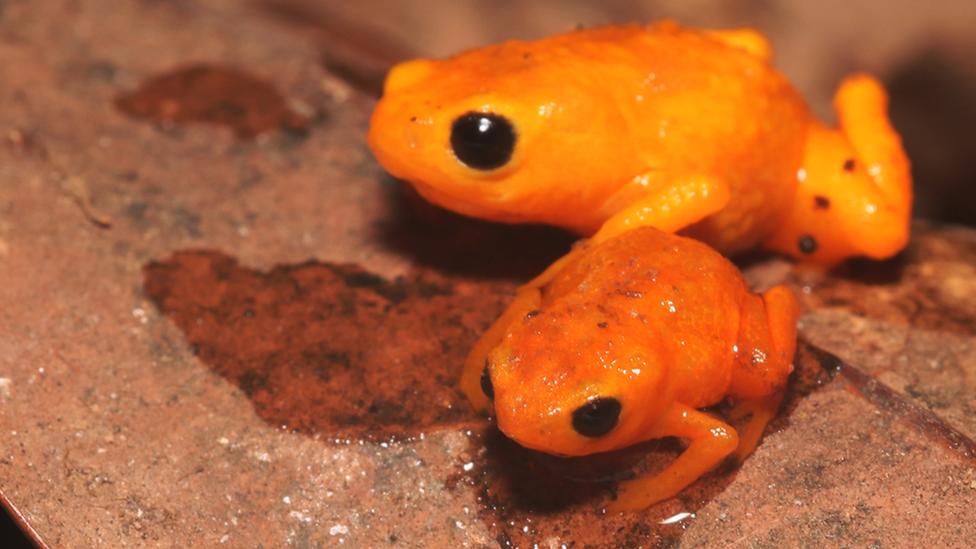Meet the pumpkin toadlet a new species with glowing bones!
- Published
- comments

Take a look at this pumpkin toadlet! A new species discovered in Brazil.
The tiny, brightly-coloured amphibian might be no bigger than your fingernail, but it is highly poisonous and lives by the Mantiqueira Mountains and forests of South-eastern Brazil.
The scientists who discovered the toadlet, named it Brachycephalus rotenbergae, after a Brazilian conservationist called Elise Laura K. Rotenberg, and shared their findings in a study.
It is part of the pumpkin toadlet family and it has a pretty unusual fluorescent ability.
It has glowing bones. Seriously.
There she glows!
What the Brachycephalus rotenbergae looks like under UV light
Some pumpkin toadlets, including the Brachycephalus rotenbergae have fluorescent skeletons.
When scientists shined a UV light on the tiny toads they discovered that the bones near to the surface of their skin glowed!
Researchers think this could be to help the toads find one another in the forest, or to warn predators not to eat them.
These toadlets aren't the only creatures who love to stand out, researchers recently discovered that tardigrades also glow under UV light.
How did they identify a new species?
Between October 2018 and September 2019, zoologist Ivan Sergio Nunes Silva Filho and his team made 76 field surveys to study how the toadlets behaved in the wild.
They also collected, measured and compared around 276 wild toadlets.
The Brachycephalus rotenbergae has a rounded snout, dark spots on parts of the skull and makes a unique chirp sound
The researchers said it is quite tricky to identify a new species of Brachycephalus, as the tiny frogs are quite similar in appearance.
In fact there are more than 30 known species of Brachycephalus, including 15 possible new species that have been identified by scientists in the last five years.
"One hundred, even 50 years ago, it was very easy to describe new species. But now, we have to do a lot more work to describe these very similar species," Nunes said.
Currently the forests that the toadlets call home are protected by the government, but researchers will keep an eye on the tiny amphibian in the hopes that it will not become endangered.
- Published23 October 2020
- Published9 March 2021
- Published4 November 2020
